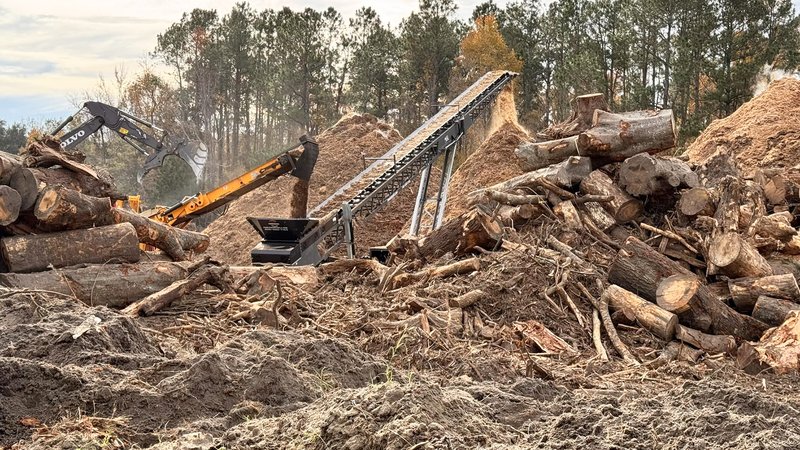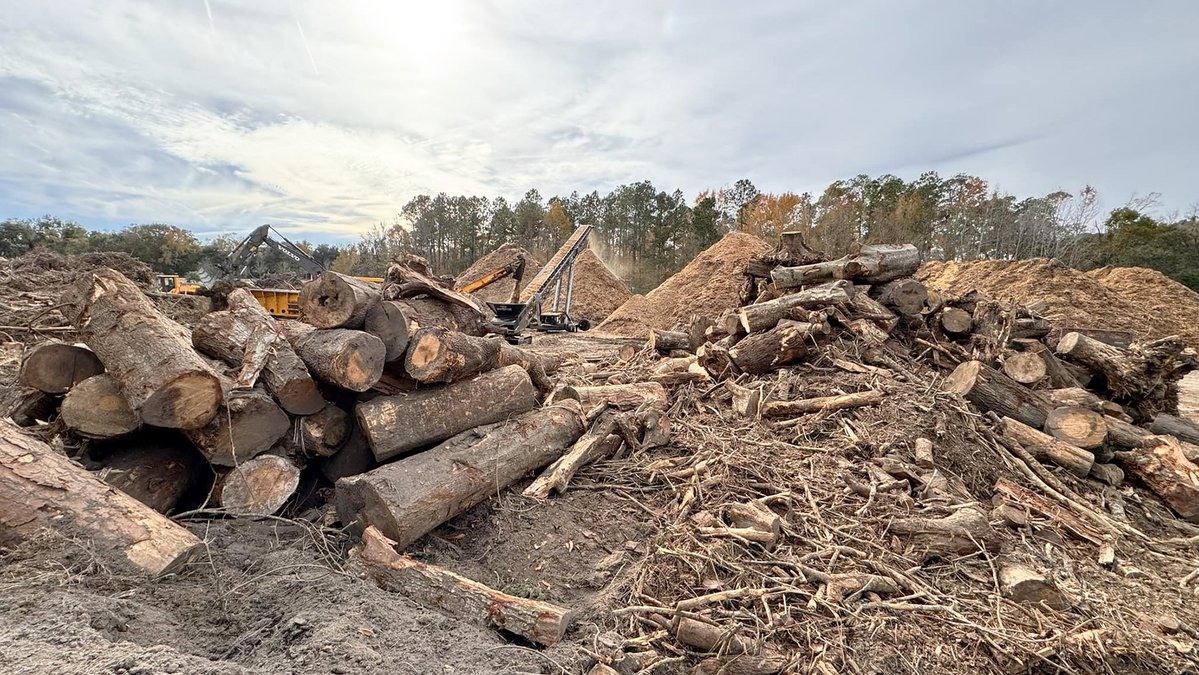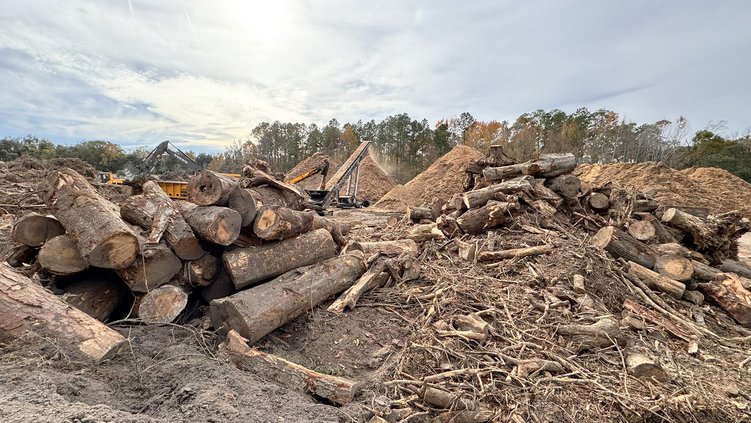Officials with the Bulloch County Public Works Department have announced that the “first round” of collection of tree debris resulting from Hurricane Helene will end Feb. 28.
Already the effort is past the point where the federal government would reimburse 100% of the cost. So the county will be on the hook for 25% of any further expenses, unless there is a federal reversal or some state assistance.
After staff members reported these points to the county Board of Commissioners on Tuesday, Feb. 18, they are expected to report back at the next commission meeting, March 4, on setting an end date for any second, or final-round, debris collection.
“February 4th marked our 120th day from this storm arriving here in Bulloch County,” Assistant Public Works Director Robert Seamans told the board. “With that, that is also where the FEMA pay schedule changed… . We went from 100 percent; now we’re into a 75-25 breakdown on paying for the cleanup.”
Helene, the second of 2024’s tropical cyclones to cause damage here, tore through on the night of Sept. 26 and early morning of Sept. 27. With the Federal Emergency Management Agency at first offering local governments 100% reimbursement for documented cleanup efforts completed within 90 days, Bulloch County contracted around Oct. 8 with Southern Disaster Recovery, or SDR, based in Greer, South Carolina, and set an initial goal to have limbs and sawed up trees removed from right of ways by Dec. 1, as the first round.
Initially, the contract allowed SDR to charge the county specific fees totaling up to $3 million for the debris removal. The county contracted a separate firm, Thompson Consulting Services, of Maitland, Florida, to monitor and quantify the debris collected in compliance with FEMA rules.
The city of Statesboro also contracted with SDR and Thompson Consulting. But both local governments soon reported that higher-dollar offers had drawn several of SDR’s hauling subcontractors to Florida to work in the cleanup there, reducing the number of trucks on the job here.
$3 million + $7 million
That situation had at least partly resolved itself by mid-December, when the commissioners approved an extension and up to $7 million additional payments on the contracts with SDR and Thompson for the debris removal and monitoring.
By that time, Georgia had also received an extension from FEMA to 120 days, total, for cleanup efforts to be completed and still qualify for 100% reimbursement.
Gov. Brian Kemp then led a request to have Georgia’s 100% reimbursement opportunity extended to 180 days, the limit already given Florida and South Carolina. But Acting FEMA Administrator Cameron Hamilton told Kemp in a Feb. 12 letter that Georgia’s request for a second extension was denied, unless successfully appealed within 30 days to President Donald Trump.
So that made Feb. 3 the deadline for 100% reimbursement.
“Some other dates that need to be noted out there, February 28, that will end Round 1 of the pick-up,” Seamans continued in his remarks to county commissioners. “We will start March 1st Round 2, and we hope to make this as quick as possible. There will be a lot of urgency with this. We want to get it done; we want to get it behind us.”
The 180th day, he noted, would be March 24. Seamans described that as “the day FEMA expects us to have this stuff completed and done with.” He added that there are “some ways of asking for extensions,” but uncertainty about getting them.
Over 324,000 yds3
“Right now,” Seamans said, the morning of Feb. 18, the effort had collected 324,000 cubic yards of vegetative storm debris in Bulloch County.
The initial estimate had been for 250,000 cubic yards. So that has been exceeded by roughly 30%.
“Close to 400,000 now is where we feel we’ll be, he said.
Recently 28 trucks a day have been hauling debris from beside county roads, averaging approximately 4,500 cubic yards daily.
The tree debris is being ground into mulch at sites in the county. Approximately 300 tractor-trailer loads of mulch have been hauled from the sites to FEMA-designated drop points in a couple of nearby counties, Seamans reported.
In response to a commissioner’s questions, he said Feb. 28, as the end of the first-round effort, should also be seen as the deadline for county residents to bring any other hurricane debris they are now aware of to the right of ways of county roads.
“The whole idea now for the second (round) is just picking up what remains and not continuing to add more out there,” Seamans said.

Not for new trimmings
He also confirmed that new yard trimmings and other green wood materials will be rejected at the mulching sites and should not be mixed with the now brown storm debris on the roadsides.
“The monitors will not allow it,” Seamans said. “That actually puts us in a bad spot with FEMA if we get site-audited on that, and we can lose funding.”
Commissioner Timmy Rushing, who is the land clearing and “tree business,” said a final end date for the debris removal should be set soon or, when spring warming occurs and living trees bud out, “there will be another round of trees beside the road, because they’ll figure out that they’re dead.”
Seams said staff members will consult the commissioners at the next meeting about a closing date for the final round.
Interim County Manager Cindy Steinmann also urged a quick end to the effort.
“I just want to reiterate … we are at a 25% out-of-pocket now,” she said. “The longer we draw this out, it gets pretty expensive.”
A budget amendment resolution commissioners approved as part of their consent agenda included a little over $10 million added expense to the general fund. This was described in a county Finance Department memo as “for debris removal services and related monitoring … to address the damage caused throughout the county by Hurricane Helene.”
This was not originally included in the fiscal year 2025 budget, but it was authorized by the commissioners’ October and December votes on the debris collection contracts.
The memo stated that the majority of the $10,005,000 amount “is expected to be reimbursed by FEMA and GEMA.”
GEMA is the Georgia Emergency Management Agency, which sometimes contributes a portion of the funds not supplied by FEMA.

